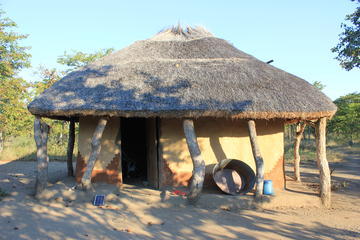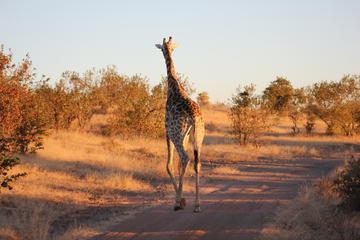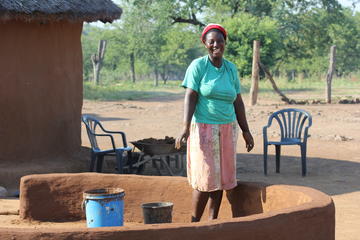Louise Monin
Last update: 28 January 2019
The thesis focuses on the impact of emotions on animal categorization and human-animal relationships in two neighboring villages of Gonarezhou National Park (South-East Zimbabwe). The Republic of Zimbabwe (formerly Southern Rhodesia) gained independence in 1980, after ninety years of British colonization. From 1980 to 2010, Robert Mugabe's government introduced an agrarian reform policy aimed at expropriating whites from their farms and redistributing them to black citizens. This policy and the dictatorial regime imposed by Mugabe have plunged the country into a climate of terror (Ndebele massacres, white farmers, intimidation, etc.) and major economic crises, the unemployment rate currently reaching 80% of the population. It is important to understand the context in which my study fits since it has largely affected the results obtained in the field and the relations knotted with the respondents (mistrust of the respondents, difficult insertion in the field, etc.).
I was able to do my research in two different villages in the Lowveld; one (Kambako) located north of the Gonarezhou National Park and adjacent to the Malilangwe Private Reserve, the other (Malipati) located at the far south of the park, adjacent to the border with South Africa. These two different geographic positions allowed us to understand two visions of protected areas and perceptions of animals that are largely heterogeneous. In these two villages, four languages were spoken; English (official language of the country, spoken by 80% of the population), Shangaan (majority of Lowveld), Ndebele and Shona. In rural areas, the economy and livelihoods of communities depend on land quality, climate and the proximity of protected areas. However, the semi-arid and low-fertility Lowveld land do not favor agriculture, and the proximity of protected areas makes it difficult to exploit arable land (bans, destruction of fields by animals, attacks of livestock, etc.), which contributes to the negative vision towards wild animal species. In addition, the study sites had the advantage of having been little studied by anthropologists concerning the place of emotions in human-animal relations, in the Bantu language.
It was thus a question of showing that the animal categories brought to light are the categories of the experience of the individuals and the emotions that they feel. For this purpose, I relied at the same time on the work of ethnobiologists and cognitive anthropologists (Berlin, Atran, Hunn, Forth, Astuti) and on the work of psychologists (Ekman, LeDoux, Damasio). From these two disciplines, I was able to borrow some of the techniquesin order to set up my field method. This was mainly based on freelisting, which was always followed by semi-structured interviews and photographic tests to test the recognition of facial expressions and wild animal species. This method allowed me to collect data on the categorization processes of the animal species, on the knowledge of the interviewees concerning the animal species and on the basic emotions.
The data analysis then allowed me to bring out different aspects. First, geographical position influences human-animal relationships; the further the village is from the park, the more tolerant the speeches about the management of the park and the wild animals. I also noticed a greater tolerance in the village north of the park, this was mainly due to the active participation of the private reserve in adjacent communities (construction of clinics, wildlife education courses, etc.) and the proximity of the park's intervention camp. Wildlife education in schools or by park teams also plays a key role in respondents' apprehension of animal species. Young people are more likely to respect wildlife protection measures than older respondents who did not have access to this education. Secondly, while the categorization of animals that emerges from freelisting clearly highlights distinct groups (domestic animals, predators, antelopes, etc.) that are similar to the Linnaean classification, there are other forms of categorizations highlighting on the one hand the level of dangerousness of the animal, and on the other hand the utility of the animal species. From freelisting, I was also able to put forward a gendered difference in the categorization process; men have longer and more specialized freelists. In this respect, only men are designated as wildlife experts. This gendered differentiation is also found for emotions; the observations allowed me to note different body and emotional reactions of the respondents to certain animal species. Finally, the analysis of the data (photographic tests) concerning the emotions allowed me to show that the facial expressions were not always recognized by the respondents and that certain emotions like the anger or the sadness were not defined exactly as Ekman's so-called universal emotions, which allows me to question the universality of emotions, taking into account the place of cultural variance in the emotional process.
Last update: 28 January 2019



